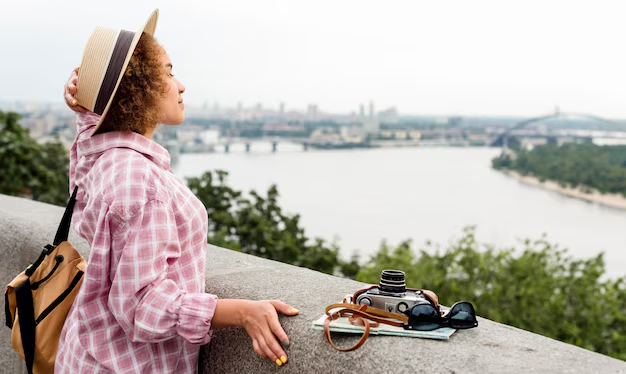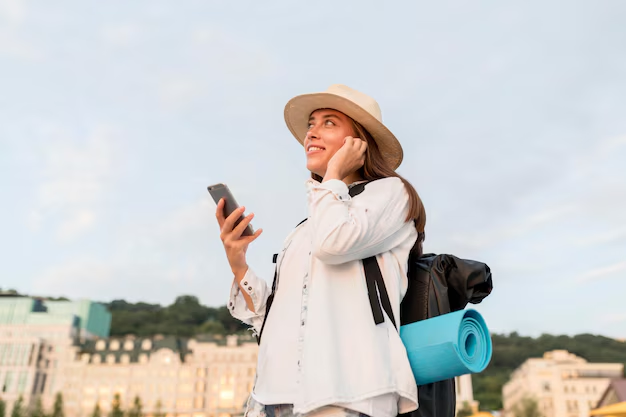Solo travel is an empowering experience that offers a unique opportunity for adventure, self-discovery, and personal growth. However, traveling alone can come with its own set of challenges, especially when it comes to staying safe. Whether you’re exploring new cities, hiking remote trails, or immersing yourself in local cultures, it’s important to prioritize your safety throughout your journey. In this article, we’ll provide essential tips for solo travelers to help you stay safe while enjoying your adventure.
1. Plan Ahead But Stay Flexible
Before embarking on your solo journey, do some research about your destination. Look into the local culture, safety tips, and areas to avoid. Plan your itinerary, but leave room for spontaneity. It’s important to have a general understanding of where you’re going, how to get there, and what to expect, but being flexible allows you to adapt to unforeseen circumstances, giving you a greater sense of control over your trip.
2. Share Your Itinerary With Someone You Trust
Even though solo travel can be about independence, it’s crucial to let someone know where you are and what your plans are. Share your travel itinerary with a close friend or family member. Keep them updated on your movements, especially if you’re heading to remote or less-traveled areas. This ensures that someone can reach you in case of an emergency.
3. Keep Your Valuables Secure
While traveling solo, it’s important to be mindful of your valuables. Use a money belt or neck pouch to keep important documents like your passport, credit cards, and extra cash safe. Always keep your valuables out of sight, especially when in public places. Avoid flaunting expensive jewelry, electronics, or other items that could attract unwanted attention.
4. Stay Connected with Technology
Make use of technology to help keep you safe while traveling. Download apps for navigation, local emergency contacts, and language translation. Apps like Google Maps or Maps.me can be lifesavers when navigating unfamiliar places. Also, consider using a tracking app or location-sharing features with a trusted friend or family member so that someone can monitor your location remotely.
5. Trust Your Instincts

When traveling alone, your intuition is your best guide. If something feels off or uncomfortable, trust your gut and remove yourself from the situation. Whether it’s an interaction with someone or a location you’re considering visiting, always prioritize your instincts. Avoid dangerous areas, especially at night, and stay away from individuals or situations that seem suspicious.
6. Stay in Well-Lit, Public Areas
When you’re out and about, try to stick to well-lit, busy areas, particularly after dark. Avoid walking down empty streets or alleys, and always stay aware of your surroundings. If you find yourself feeling unsafe or uncomfortable, find a public place, such as a café or shop, where you can gather your bearings and assess the situation.
7. Use Trusted Accommodation
Choose accommodation in safe neighborhoods and read reviews to ensure that it has a good reputation. Hostels and hotels with 24/7 security are often a good choice for solo travelers. Be mindful when sharing rooms or dormitories, and lock up your belongings when you’re not in your room. Always verify the location’s safety beforehand, and if you can, book a place with good security features.
8. Stay Hydrated and Eat Well
While focusing on safety, it’s essential not to neglect your health. Keep hydrated, eat nutritious meals, and make sure you get plenty of rest. Traveling solo can be exhausting, and staying in good physical health is critical for both safety and enjoyment. Eating balanced meals will keep your energy up, while hydration ensures you remain alert and focused throughout the day.
9. Be Cautious With Alcohol
While enjoying a drink or two can be part of your solo travel experience, it’s important to stay cautious. Limit alcohol consumption, especially when you’re alone, as it can impair your judgment and make you more vulnerable. Always keep an eye on your drink and avoid accepting drinks from strangers unless you’re in a trusted environment.
10. Have Emergency Contacts Ready
Make sure you have a list of local emergency contacts, including the nearest embassy, local police, and medical facilities. Familiarize yourself with the emergency numbers for the country you’re in, as they can differ from those in your home country. It’s also a good idea to have access to a list of important phone numbers (family, friends, accommodations) in case of emergencies.
Conclusion
Solo travel offers a range of rewards, including independence, personal growth, and the opportunity to create unforgettable experiences. However, staying safe while traveling solo is essential. By planning ahead, staying connected, and trusting your instincts, you can ensure that your solo adventure is not only exciting but also safe and secure. Remember, your safety is the priority, and with a little extra awareness, you can enjoy your travels without unnecessary risks.
FAQs
Q. Is solo travel safe for women?
Yes, solo travel can be safe for women as long as you take the necessary precautions, such as researching safe destinations, keeping valuables secure, and staying aware of your surroundings.
Q. What are the best apps for solo travelers?
Some useful apps for solo travelers include Google Maps, TripAdvisor, XE Currency, Google Translate, and emergency apps that help you stay connected with loved ones.
Q. How do I deal with loneliness while traveling solo?
Staying busy with activities, joining local tours, meeting fellow travelers, or using social media to connect with friends and family can help combat loneliness during your trip.
Q. How can I stay safe while traveling solo at night?
Stick to well-lit, populated areas, avoid walking alone at night, and use reliable transportation services like registered taxis or ridesharing apps when returning to your accommodation.
Q. What should I do if I feel unsafe while traveling solo?
If you feel unsafe, trust your instincts, remove yourself from the situation, and find a safe public place. Contact local authorities or your emergency contacts for assistance if necessary.
